A big part of your prepping life and emergency preparedness, in general, involves stockpiling food.
This is a mandatory activity that requires careful planning and budgeting. No matter how you look at it, food and water will always be your main concerns when things go south.
Picking the right survival foods for your pantry is a vital step because you will rely on those foods to survive when grocery stores go out of business. Each survival pantry should be well equipped to sustain the owner(s) for more than 6 months, and the main keyword you should keep in mind is “diversity.”
The foods you stockpile should satisfy even the pickiest of eaters, and you should make everything possible to avoid appetite fatigue. In today’s market, there are many survival foods and each has its advantages and disadvantages. Regardless if you buy the foods or if you decide to make them at home, you should be aware of these distinctive characteristics before you store them in your pantry.
Freeze-dried food
In recent years, freeze-dried food has gained a lot of popularity in our ranks, and you can buy them already packaged for long-term storage. Some have invested in a freeze dryer and are making their own rations. Although not accessible to everyone, such an appliance will provide a good return of investment in the long run.
Advantages:
Freeze-dried goods have a long shelf life and, in my opinion, are the ideal choices for a survival pantry. This food has low moisture content and it can be reconstituted quickly. I can personally testify that freeze-dried food is well preserved and the savor is much better compared to dehydrated food.
I consider this an ideal solution for storing dry meat for extended blackout periods. In addition, the freeze-dried goods will retain their original shape, color, and texture, even after reconstruction. It’s much appealing and you won’t have to guess what you packaged, compared to traditional freezing, where certain foods can turn mushy.
Disadvantages:
For us, preppers, this is perhaps the most expensive food storage option, and our survival pantries cannot be fully stocked with such foods. If you have your own freeze dryer, you are one of the lucky preppers, but as I said, it is not available to everyone. Another disadvantage is that when you need to prepare freeze-dried food, you will need water, and as we all know, this can become a problem during an SHTF event.
You also have to consider that these goods are much bulkier compared to their dehydrated counterparts and you will require more storage room to make an extensive supply. Also, when bugging out, it might be difficult to carry freeze-dried foods compared to other survival foods.
Dehydrated foods
Dehydrating food is an ancient food preservation method, and it was extensively used by our forefathers. With the invention of the classical oven and the modern food dehydrator, drying food has become a hobby for some. For the serious prepper, this is an excellent method to preserve food long-term and in case you are on a budget, you can improvise a solar dehydrator to reduce your operation costs.
Advantages:
Dehydrated foods are much lighter compared to other foods since almost all the moisture content is eliminated. This food is waste-free and due to its low water content, it can last for a few years without getting spoiled.
It can be an ideal addition to any bug out bag and you won’t feel the extra weight. It is perhaps the cheapest food storage alternative for your pantry since it’s a simple DIY project and you can do it in the comfort of your own home. Also, the operation costs are reduced since you can use a solar dehydrator and produce from your garden.
Disadvantages:
Just like in the case of freeze-dried food, preparing dehydrated food requires water, and in some cases quite a lot. As we all know, water could become a luxury in a survival situation, so you will have to figure ways of cooking the food with minimum water.
When it comes to visual appeal, these foods are not a pretty picture and the young ones might refuse to eat them. When reconstructed, most dehydrated foods will lose their original taste, and the nutritional value is lowered compared to freeze-dried foods.
Meals ready to eat (MRE)
I’m a fan of this self-contained, field ration food that is packaged tight and neatly. Although initially, this food was bought by the United States military for its service members, this food is now available to everyone. A meal ready to eat contains almost everything for a complete meal (including dessert) and is packed with needed nutrients to sustain your body during harsh times.
What was once used in combat and other conditions where food facilities were not available has now become a prepper’s favorite. If you want to stockpile your pantry with MREs, I recommend doing so during the sale periods.
Advantages:
These are very convenient since you have everything readily available in one package. You don’t need cooking skills to prepare the food, and you won’t have to rely on your survival improvised cooking skills.
Even though the texture is different, I assure you that these foods are very similar to your everyday meals. You won’t need water to cook the food and usually, no mixing or blending is required. These are ideal for a bugging in scenario or a grid-down event because they take up little space and you don’t need electricity to be prepared. You can eat them straight from the pouch and are a good “on the go” meal.
Disadvantages:
The main problem is that the taste and texture may not be for everyone. There are as many taste preferences as there are people. Even though it provides everything a meal should contain, I can testify that you will often wonder if the meal labeled on the packages is the same thing you are actually eating. If you can’t get various MREs (including from other countries), you will have to deal with food fatigue at some point. Long-term consumption of MREs is not recommended.
One thing that is worth mentioning is the high content of additives that are added to MREs. Besides making them more expensive, some people will not manage to hold them down. I recommend testing before buying large quantities. If after 24 hours since your last MRE, you’re in good shape and your stomach is not angry, you can consider them a good alternative for your survival pantry.
Carrying MREs in your bug out bag can be difficult due to their weight and packaging (the foil pouches can be punctured if not packed properly).
Canned foods
America’s number one choice when it comes to food storing (regardless if someone is a prepper or not) remains canned food. Most people I know have a monthly budget carefully planned for purchasing canned goods. This is a cheap alternative to equip a pantry, and it can provide you with enough diversity to survive for a long time.
Advantages:
Canned goods provide a great variety, and you will avoid appetite fatigue. It is a cheap alternative, and there are many sales you can take advantage of. Canned food is packed securely so there is little chance they will contain oxygen or moisture. You can find canned goods everywhere and are a good option for the last emergency shopping trip.
Most canned goods have a reasonable shelf life of 3 years or more if stored properly. Even so, you can rotate your supplies to make sure you never run out of fresh ones.
The waste products of canned foods can be used for other survival purposes. Metal will become valuable if you know how to work and transform it. The juice content of most foods can be a good substitute for water and you can use it for cooking (depending on the canned food).
Disadvantages:
Canned goods are heavier, and they take up a lot of storage space. These foods cannot be frozen and there will be problems if the cans are exposed to temperature variations. Also, exposing the cans to water or humidity will lead to rusting, affecting in time the integrity of cans and the safety of foods.
There are a lot of “unknown” ingredients in the cans and you have no idea if all that is labeled on the can is all that can be found inside of it. A diet composed of mainly canned foods will become a health risk.
Don’t count on canned food for your bugging out plan. Besides being heavy, the cans can create noise when moving around and you will signal your position to everyone in your vicinity. You will require a lot of storage space if you rely mostly on canned goods.
Energy food bars
Initially designed for athletes and outdoor explorers, you can now find an energy food bar in every backpack. These are fast alternatives to a full meal and have become a favorite snack for many people. Some buy them, while others make them at home.
Advantages:
In the United States, energy food bars can be quite inexpensive compared to other survival foods. These are engineered to provide the right amount of calories for both adults and children. Based on the different physical activities and accompanying elements such as weather, duration and exposure, you might require more than one food bar.
These are ideal for bugging out scenarios, and the shelf life of some of these food bars is outrageous if you ask me. You can stockpile these when you are dealing with limited space and are mainly a good choice for urban and apartment preppers. Energy food bars are compact and every kid will love them since they have sugar and other types of ingredients that kids simply love.
Disadvantages:
These energy bars have limited nutritional value and are not recommended for your daily diet. Also, the taste is different from brand to brand, and you need a lot of testing before settling on a certain brand. Consider them as transition foods since they are not adequate for long-term survival. Since you cannot heat or prepare energy bars, they cannot make a decent substitute for a hot meal.
Lab food
In recent years there has been a surge in processed, engineered food or lab food if you will. You’ve probably heard of Soylent which is one of the pioneers in this field and perhaps the most advertised substitute meal. Developed initially by the Japanese market to cut the launch time and increase the productivity of mainly office workers, it has found is way in other civilized countries, including ours.
The idea behind this product (and many others like it) was to avoid wasting time going out to eat or preparing/heating your food and replace all the nutritional requirements of an average adult with a liquid and powder (you mix the two or you mix the powder with water or milk).
Advantages:
These are good alternatives for those who can afford them (although prices have gone down considerably). They are easy to store and you don’t require a lot of storage space. They are ideal for urban preppers and those who are always on the go. Available in both powder and liquid form, and the powder form has an extensive shelf-life.
These engineered foods are FDA approved so we can assume that they are safe for long-term consumption. If you are a vegan prepper (yes, there are a few of them out there) these are a good alternative for you since they have no animal products or byproducts.
Disadvantages:
The taste is not to everyone’s liking and it takes some time to get used to it. I’ve tried it, but it’s not for me. There were articles at some point claiming that these caused health issues for certain people since they are not GMO and gluten-free, nor allergen-free. I can’t verify these claims since I can tolerate gluten and I have no known allergies. You can’t rely just on this type of food since you will require diversity.
Concluding
Preparing a survival pantry is a time-consuming activity that will eventually affect your family budget. This is why it’s important to research and figure out if the survival foods available out there are the proper choice for you and your loved ones.
As I always say, “Test, test and test some more!” before buying. I hope the information provided in this article will help you make a wise choice and help you figure out if your pantry is equipped with the proper survival food.


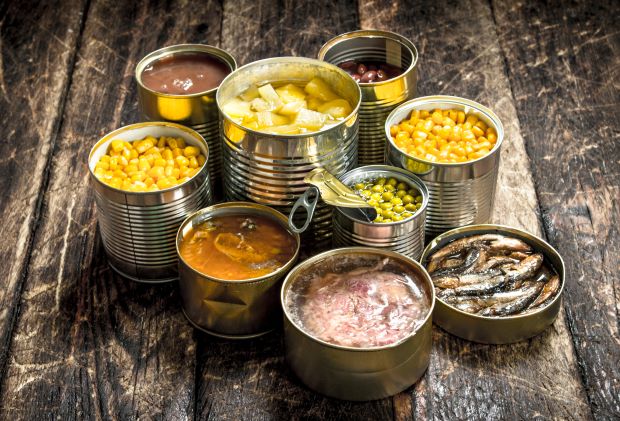

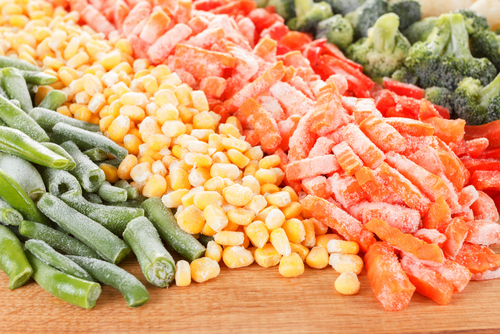
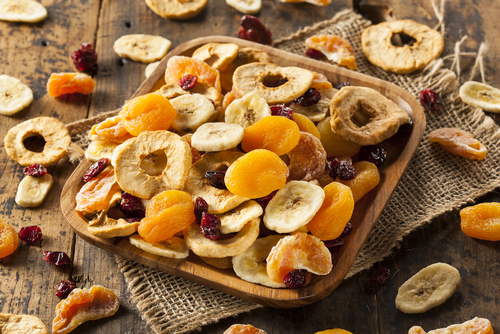
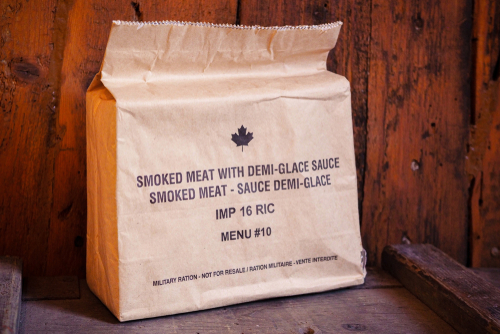
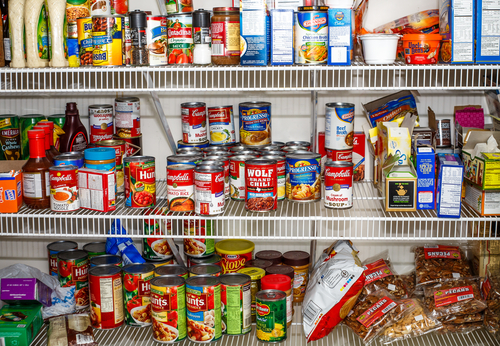
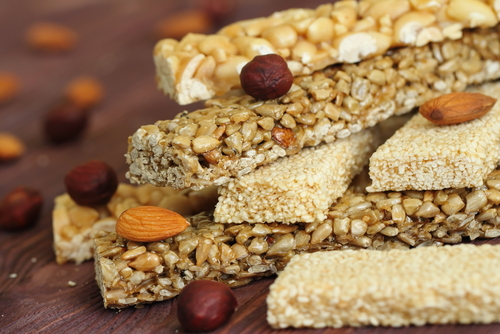



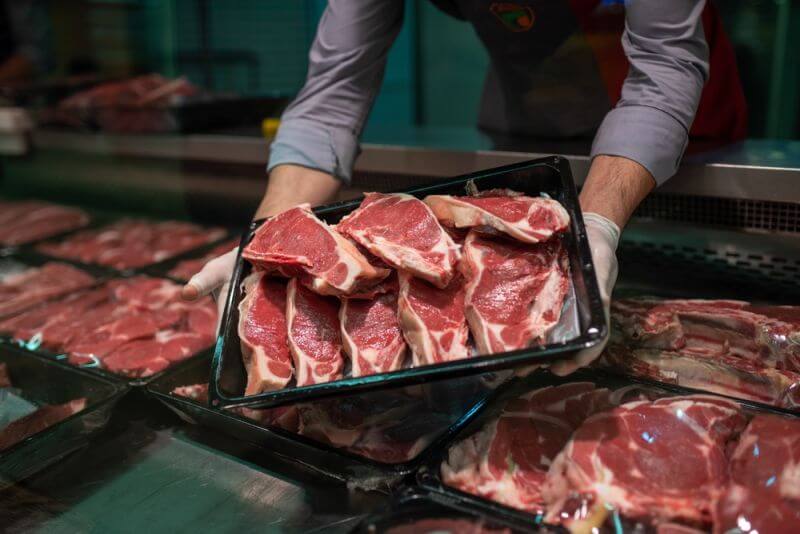
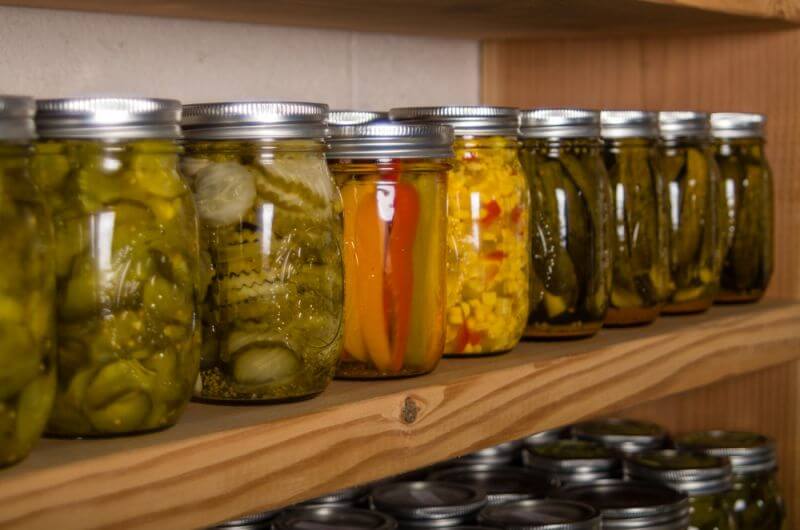
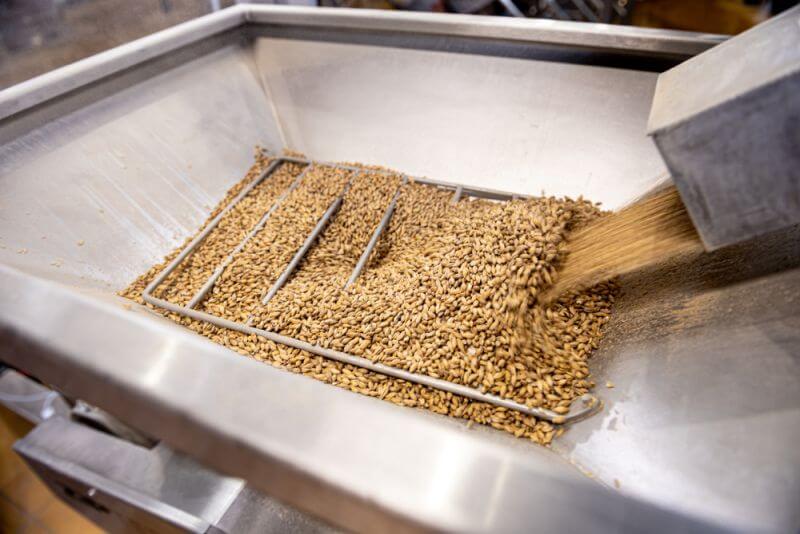

Dale | March 12, 2020
|
I agree with you 100% that freeze-dried foods are a prepper’s best choice. As you stated, they taste and look great, but their biggest advantage is their incredibly-long shelf life of 25 – 30 YEARS. Nothing else comes close! For that reason, alone, I would suggest to all serious preppers that you save up your pennies to buy as much freeze-dried food as possible. I guess I fall into the “lucky” category, because I own a freeze-drier, and I can freeze-dry anything and everything that I like to eat. But, I also buy commercial freeze-dried food.
In regards to canned food . . . A common misconception is that canned food “goes bad” once it is past its expiration date. NOT TRUE! I retired from the grocery industry after 34 years of working with canned foods and I will tell you that the expiration dates on cans are primarily intended for the use of grocery stores and warehouses to rotate their stock and keep it fresh. The whole ‘expiration date” craze came about because a few customers way back in the 1970s began to notice the dates stamped on cans and other packaged foods and became convinced that the food “expired” after that date. The media got ‘hold of the story and blew it out of proportion, so, now people believe, incorrectly, that you must throw canned food away, once the expiration date has passed. That’s a misconception that needs to be corrected. Canned food will last for several YEARS beyond the expiration date. I have canned goods in my pantry, right now, that are three or four years beyond the expiration dates and the food is still fine. As long as your cans are not swollen or “puffy” they are safe to eat. The vacuum seal must be intact. If you press down on the lid of a can and it makes a “thunka-thunka” noise THROW IT OUT!! The seal has been compromised. Also, check around the cans’ rims and under the labels to make sure that they have no holes and have not been punctured by anything. DO NOT TRUST ANY CAN THAT HAS BEEN DENTED ALONG THE RIM! The seal has probably been compromised. THROW IT OUT! A good test, following a visual inspection of the can, is to hold the can up to your nose and sniff around the rims’ edges. If you can smell the food inside, there is a leak. THROW IT OUT! In conclusion . . . Yes, you should rotate your canned food stockpile to keep it fresh, but don’t discard anything simply because the “expiration date” has passed. You will probably be throwing away perfectly good food that your life may ultimately depend on!
William Halford | March 12, 2020
|
You said “Canned food is packed securely so there is little chance they will contain oxygen or moisture.” No, with maybe rare exceptions, canned foods (soups, stews, beans, broth, chili, sardines, tuna, etc) have moisture. And often quite a bit of it.
TheSouthernNationalist | March 13, 2020
|
Very good article.
One thing to keep in mind is to stock what you eat (or enjoy)
Grabbing 25 cans of tuna from the store shelf but no one in your family eats or even likes tuna is a waste of money.
JR | October 5, 2020
|
I still say if it is nutritional and reasonable you should buy it ! I say when you are teaching your children about prepping the first thing you do is teach them to eat everything! That means learning leadership skills and eating everything yourself. If the things you are prepping for happen all this foolishness about I don’t like it will be long forgotten. It is a spoiled mentality that few in the world have the luxury of ,and you will not either, if you actually need your preps .Tuna as the example you forwarded has protein and fats. It would actually work well for barter, but when you get hungry you won’t even consider bartering anything so precious.JR
Ted | May 16, 2020
|
Soylent??? Isn’t the green variety made from People?
Dragon Chow | June 2, 2020
|
Yep…if you think that’s disgusting – don’t even ask what soylent brown is made from 😉
MikeyW | October 5, 2020
|
I’m confused. You say that freeze-dried food has less moisture than dehydrated food, but that it is bulkier and heavier than dehydrated food. Doesn’t water have weight and bulk? I would think that freeze-dried food would be both lighter and less bulky than dehydrated. What am I missing?
BillH | March 18, 2021
|
Dehydrated food still contains some water, so it is heavier than otherwise identical freeze dried. Dehydrated food shrinks as it dehydrates. But freeze dried remains the same size as the original product and is lighter than dehydrated.
In practice, dehydrated food which has not been reconstituted is chewy. Examples are grapes and dried figs. Unreconstituted freeze dried food is light and airy when you bite into it, but becomes sticky as it rehydrates in your mouth. Examples are freeze dried ice cream and fruit slices like apple and strawberry.
BillH | October 5, 2020
|
I disagree that need for water is a disadvantage of freeze-dried and dehydrated food for long-term storage. If you don’t have an essentially unlimited supply of water, you die when it runs out. Period. And you are not a survivalist / prepper if you do not obtain such. You should have a well on any property where you intend long-term survival (longer than a few weeks). Or at least an open body of water on your property or nearby that you can haul water from and a method to purify it. If you don’t have this, you must plan to bug out to someplace that does.
Yes, you do need at least a few weeks of food that requires no preparation at all. The first few days might be chaotic You will need to eat without taking time from dealing with your immediate crises,
You seem to have completely left out arguably the most important and least costly category of food stored for long-term survival. This would be grains and seeds that are in a sense “inherently dehydrated” but require water to create meals. Rice, beans, wheat, and other grains. Along with the rest of the “Mormon Basic Four” beyond wheat: powdered milk, sugar or honey, and salt. The least expensive way to feed yourself is rice and beans (any type) which together constitute complete protean.
I see no scenarios where MREs make sense for survivalists. Being wet-packed, they are little different from canned goods. Except that they are less likely to agree with you when eaten, as you point out. And much more expensive. No different in shelf life. And as you point out, subject to spoilage from small holes if not treated gingerly. Not significantly lighter than canned goods, as most of the weight of a can of food is the food and water inside, not the can. For a 72 hour bug out bag, stick with things like nuts, candies, life raft rations, jerky, and perhaps small cans of meat or kits with salad and crackers. If you are trying to get somewhere in 3 days, you do not want to waste time with meal prep, or weight for a stove, or attract others with the smells of your cooking. Seasoned backpackers do not stop to cook lunch.
William Halford | March 18, 2021
|
The advantages of MREs, however, is that the full MRE like the military issues does have other things like matches, toilet paper, moist towelettes, salt/sugar, instant coffee and powdered creamer, a tiny bottle of hot sauce, etc. So this makes them a little more versatile. Using them, I didn’t need to carry toilet paper or a firestarter separately. I saved the salt and sugar, which could be used with water as a quick energy drink after hard physical activity, or could be bartered if needed. And I’ve even used some of the packaging as tinder. Plus, if you thoroughly burn what remains, you can bury the ashes and burned foil, so you don’t have a lot to dispose of, and you don’t need to carry a bunch of of trash to the closest garbage can. Burn everything well enough and bury it well enough, and even a bear won’t be attracted enough to dig it up.
And despite the “3 meals a day” adage, you don’t need 3 MREs a day, as 2 a day (at an average of 1200 calories each) has enough calories for a person, with some of each one being kept for snacks. And if the situation is bad enough, a person could make do with 1 a day, spreading out the food throughout the day. I’ve experimented with MREs, and while not the most economical or the best food, they can be used if you use them correctly.
I wouldn’t use them for hiking more than a couple of days due to the weight and bulk (although I have hidden them at strategic places along the 67 mile Ocala trail in Florida so I wouldn’t be carrying the weight of all of my food for the whole hike), but they would work if bugging out in a vehicle and you had time to load a case, as that’s 6 day’s worth of food for one person, in one 16″L x 11.5″W x 10″H, 20 pound box. And the box is very well constructed, and very durable. I’ve used that very durable cardboard for things.
Elaine | October 5, 2020
|
TOTALLY wrong to assume that since the FDA approves something it is safe! DO YOUR OWN RESEARCH ON FOODS! The FDA, as most of the other federal agencies, are totally on the take!
Dale | October 5, 2020
|
You are only partly correct when you state that freeze-dried food is much bulkier than dehydrated food, and requires more storage space.. Freeze-dried food may be a TINY bit bulkier than dehydrated, depending upon the food. Some freeze-dried foods are actually LESS bulky than dehydrated. In the final analysis, they’re pretty much comparable. Another HUGE advantage to freeze-dried food is that it can (and, often, is) cooked before it is freeze-dried. That means that all you have to do is reconstitute it by adding water, wait a few minutes, and eat. For a hot meal, boil your water, first, then add the boiling water to the food. Both have the advantage of the absence of cooking odors. No one will smell your food unless they’re already right on top of you. Yet, another advantage to freeze-dried food is that it is the absolute lightest food that you can carry. Most of the weight of food — ANY food — is water. Freeze-dried food has had ALL of the water removed. Finally, freeze-dried food offers as much variety as canned food, without the weight penalty. You can buy vegetables, fruits, meat, cheese (Yes, cheese! And, it reconstitutes beautifully. You can’t tell that it’s not fresh!). ANYTHING can be freeze-dried, either raw or cooked. No loss of nutrition or taste. And, with a shelf-life of 25 – 30 years, there’s no need to worry about rotating your supplies. Just keep building up your stockpile.
Bill In Idaho | October 12, 2020
|
RE: Energy food bars – If you are Not referring to either: 1.) MET-Rx Big 100 Meal Replacement Bar ( 32 grams of protein per bar) – or 2.) Chef brand 5-Minute meals (Very Nourishing Self-heating TV dinners) – or 3.) Datrex Emergency Survival Food Bar (2400 Calorie Full-Day meal ) – chew along All Day. — THEN, You are just fooling yourself – and Wasting time and Money. Pay Attention !